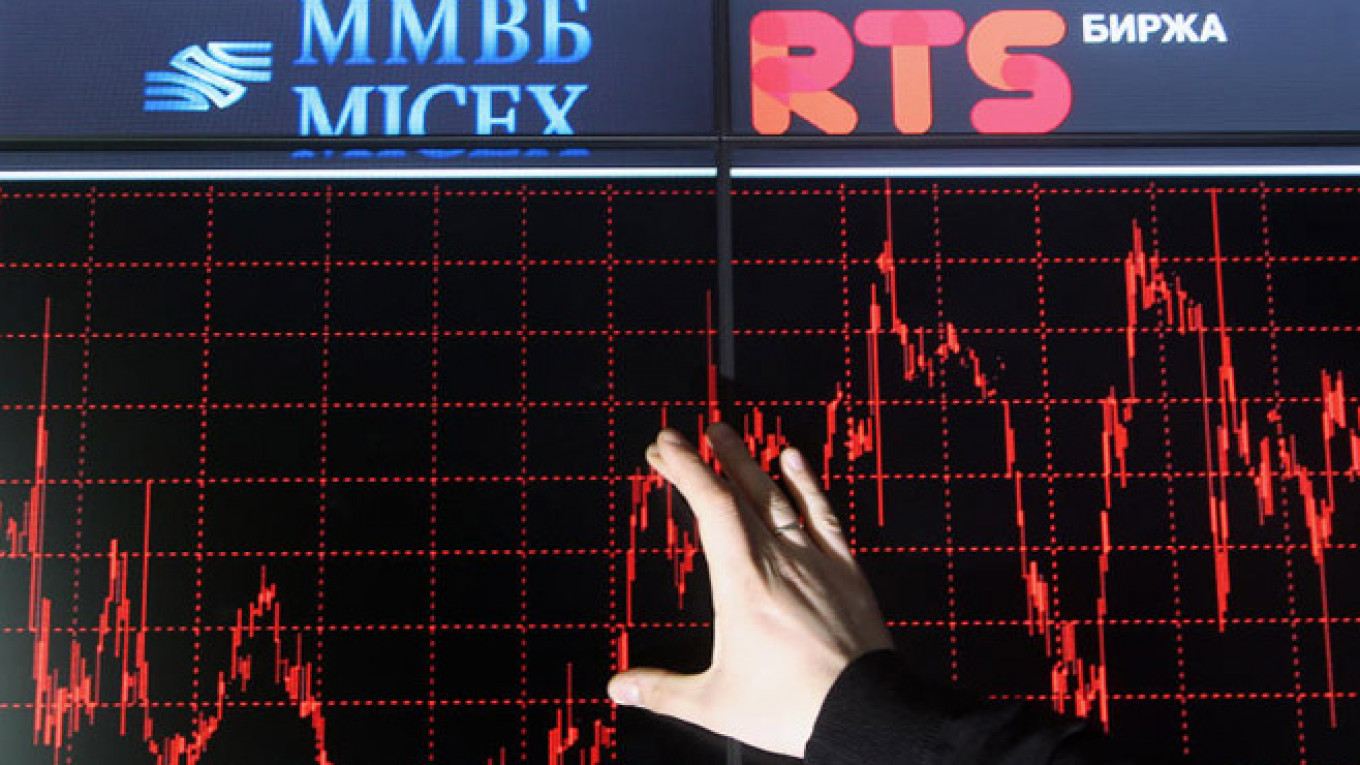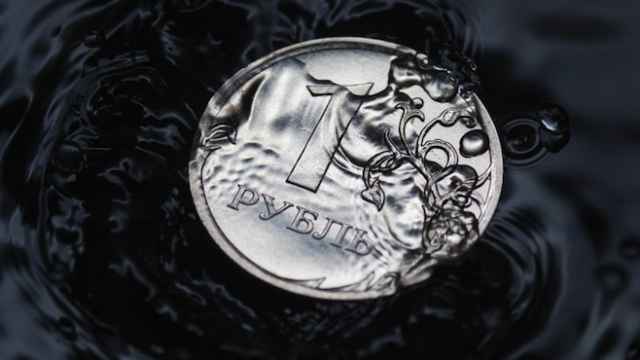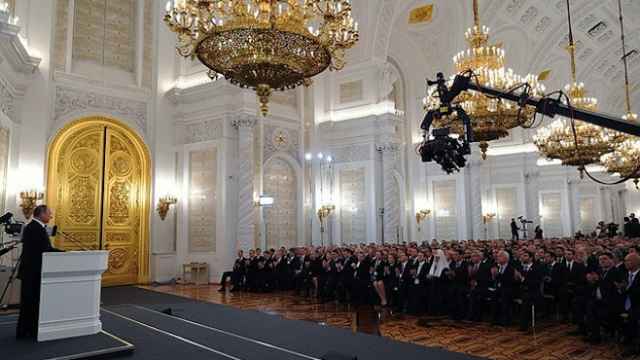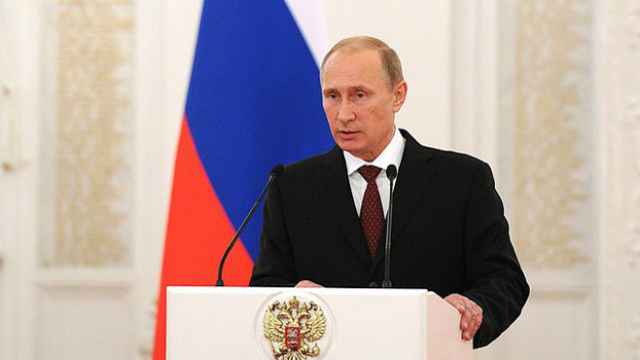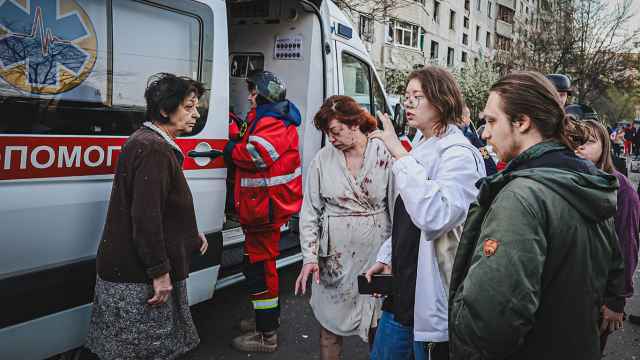Russia's two major stock indexes have diverged sharply in recent weeks, split further apart by a weak ruble and risk aversion among foreign investors than they had ever been since they were set up in the 1990s.
The dollar-denominated RTS Index hit five-year lows this week, approaching levels last reached when Russia was engulfed by the global financial crisis. At the same time, the MICEX Index has risen steadily, climbing Wednesday above 1,600 points for the first time since March 2012.
The decoupling of the two indexes, which trade beneath the umbrella of the Moscow Exchange since their merger three years ago, has been primarily driven by Russia's plunging currency.
The ruble has shed almost 40 percent of its value against the U.S. dollar since January on the back of falling oil prices, Western sanctions on Moscow for its role in the Ukraine crisis and an economy teetering on the brink of recession.
"The difference is explained to a large extent by the currency moves," said Vladimir Tikhomirov, chief economist at BCS Financial Group in Moscow.
While the MICEX Index is denominated in rubles, meaning it gains from the devaluation of the Russian currency, the RTS Index is denominated in dollars and loses from the ruble's fall.
Between July and December, the MICEX Index rose from 1,379 to 1594.92, a gain of 15.6 percent. The RTS Index, over the same five-month period, dropped 24 percent to 925.89.
But the MICEX and RTS indexes are more dislocated now than during the global financial crisis of 2008-09, when the ruble also dropped heavily. Back then, both indexes collapsed in sync as oil prices tumbled.
But today, Russia's economic difficulties mark the country out on the world stage and go against global trends. "The current situation is different," Tikhomirov said. "There are other places in the world where investors can put their money."
Even if you were to re-denominate the RTS Index into rubles it would not erase the entire divergence from the MICEX Index, he said.
Differences has been exacerbated by historical peculiarities: The RTS Index has traditionally been favored by foreign investors, while domestic investors prefer the MICEX Index. "Local investors tend to be more conservative in selling stocks than foreign investors," Tikhomirov said.
Established in the 1990s, the MICEX and RTS bourses merged in 2011 to become the Moscow Exchange as part of a drive to transform the city into an international financial center.
Plans to combine the two indexes into one trading platform denominated in rubles have never been realized because investors are too comfortable with the current system, according to Moscow Exchange spokesperson Nikita Bekasov. "But the question remains open," he said.
Contact the author at h.amos@imedia.ru
A Message from The Moscow Times:
Dear readers,
We are facing unprecedented challenges. Russia's Prosecutor General's Office has designated The Moscow Times as an "undesirable" organization, criminalizing our work and putting our staff at risk of prosecution. This follows our earlier unjust labeling as a "foreign agent."
These actions are direct attempts to silence independent journalism in Russia. The authorities claim our work "discredits the decisions of the Russian leadership." We see things differently: we strive to provide accurate, unbiased reporting on Russia.
We, the journalists of The Moscow Times, refuse to be silenced. But to continue our work, we need your help.
Your support, no matter how small, makes a world of difference. If you can, please support us monthly starting from just $2. It's quick to set up, and every contribution makes a significant impact.
By supporting The Moscow Times, you're defending open, independent journalism in the face of repression. Thank you for standing with us.
Remind me later.



